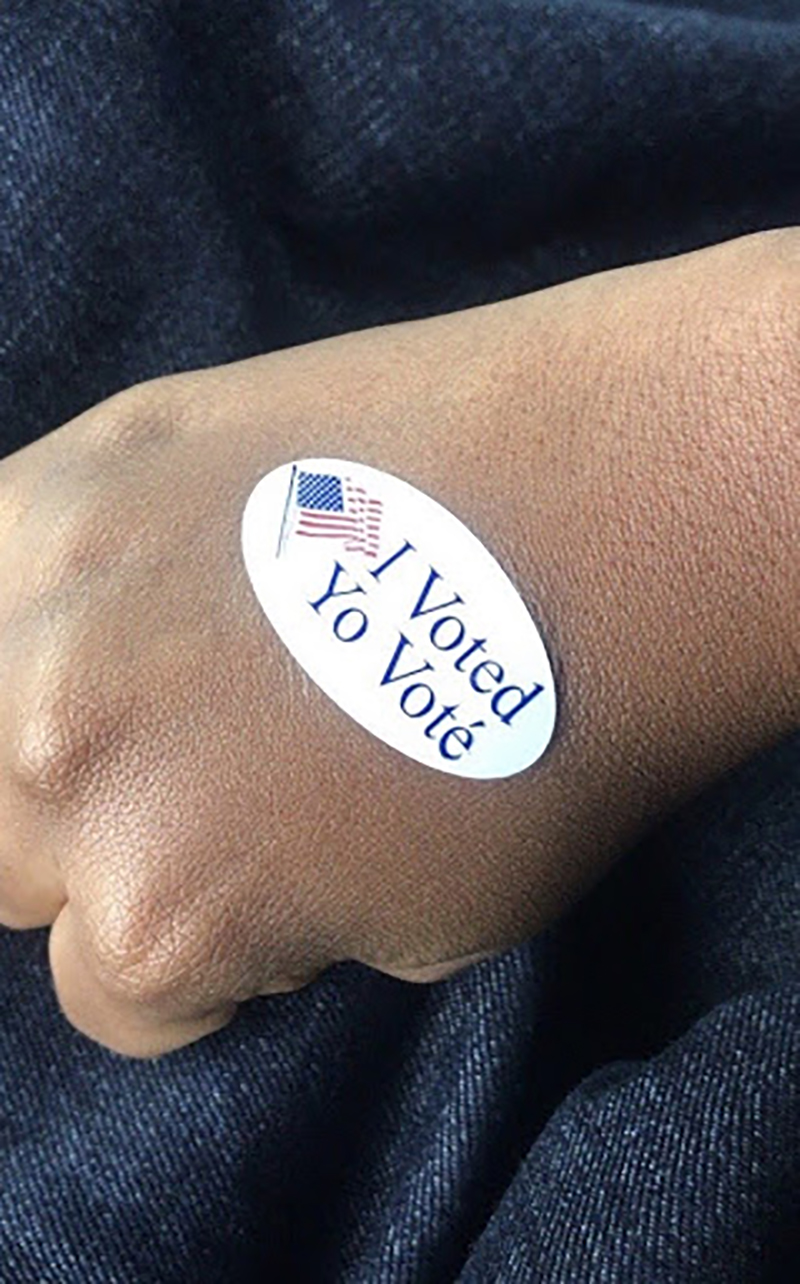Like the millions of students that have made their voices heard this election I cast my vote early. As a token I received an “I Voted” sticker for utilizing my civic right to vote — a right which continues to be suppressed across the country. On my drive back home, I began to think of the meaning of this sticker.
The symbols “Yo Voté” and the US flag placed next to one another raise questions as to how well the nation has upheld the values which it claims. Latinx and other minority communities that make up a large share of essential workers that have kept the country running have been disproportionately affected by the COVID-19 pandemic. This has placed millions of families in great economic and health risk. The carelessness with which the virus has been handled and the divisive speech that has continued over the last four years regarding immigration laws brings to the forefront the contradictions signified in the flag. This train of thought led to an investigation into how the flag has been interpreted by artists, and what messages those images contain.
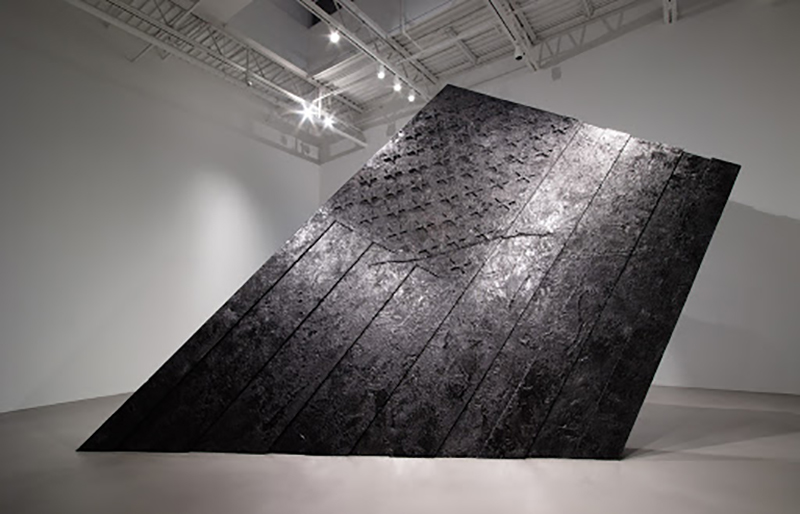
Robert Longo, Untitled (The Pequod), 2014. Photo from Petzel Gallery website
A flag is a pelagic device of expansion and conquest. It is a 17-foot steel and wooden sculpture covered in black wax. It is a sunken symbol as fictitious as the Pequod of Ahab. It is a fabrication, a concocted line that demarcates territories. As Frederick Douglas, reminds us in “The Meaning of July Fourth for the Negro,” a flag is “false to the past, false to the present, and solemnly binds herself to be false to the future.” Its incision into the soil began the plot of her undoing as the Trails were wept. It is a story of tragedy like that Monday at Wounded Knee.
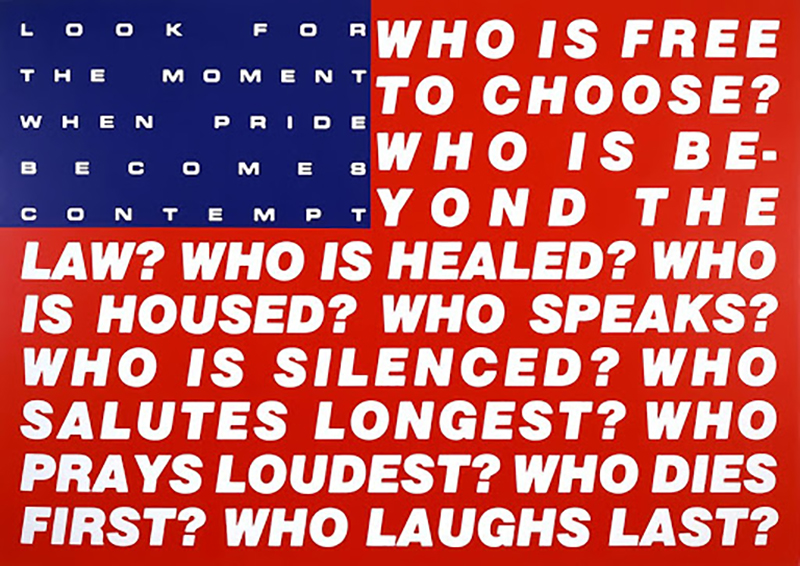
Barbara Kruger, Untitled (Questions), 1990/2018. Photo from MOCA website
A flag posits several questions: Who is beyond the law? Who is healed? Who is housed? Who is silenced? Who salutes longest? Who dies first? A flag, if improperly displayed or challenged, reveals the patriotic zeal of Nordic youth in the style of ‘33. A flag is a Double Portrait, It is oriented vertically with the colors of the rainbow rendered boldly with oil on canvas. It is love, it is pride, it is light. It is visible and yet not completely legible.
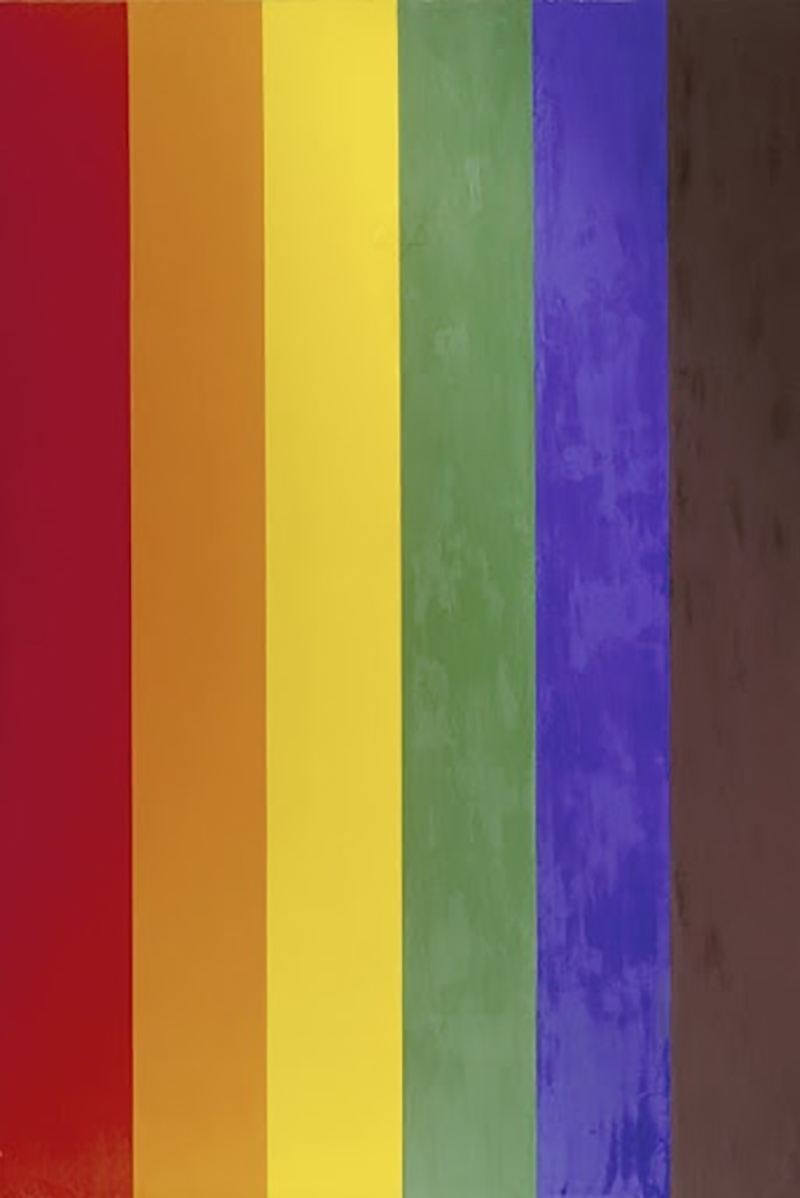
Ross Bleckner, Double Portrait (Gay Flag), 1993. Image from The Jewish Museum website
A flag is a multifarious landscape stared upon from a distance, a Rückenfigur. It escapes comprehension, the spectrum of its light is emblematic of the habitual attempts of its entrapment and commodification. Its glow is varied and can be commodified through a series of means.
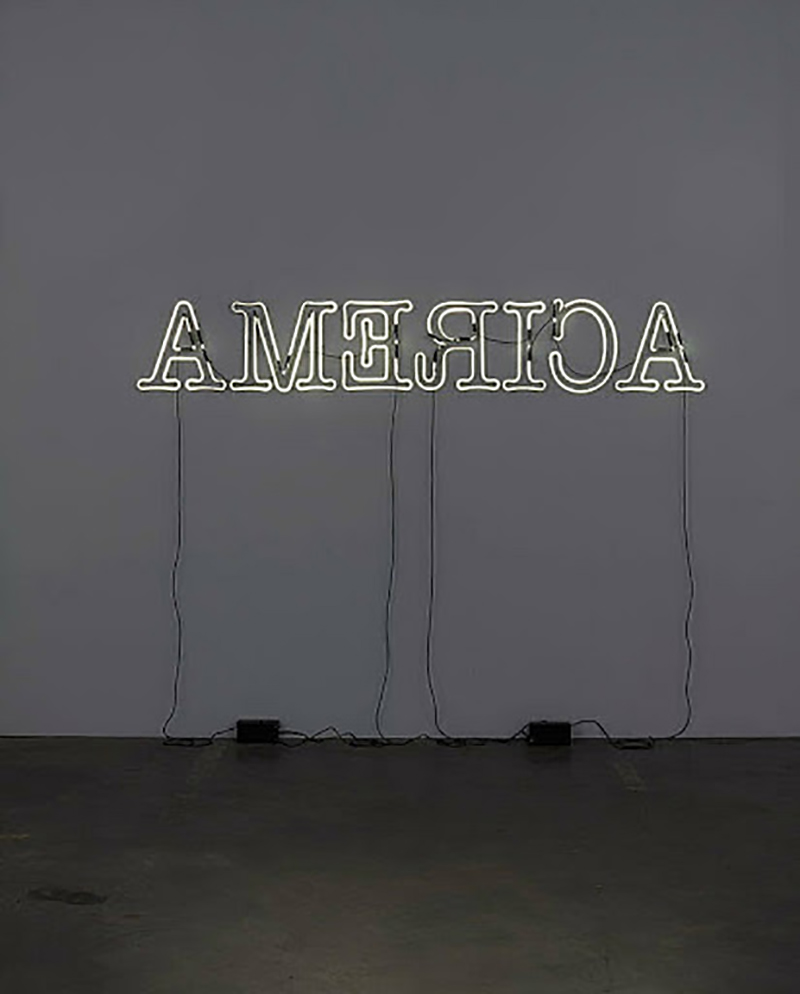
Glenn Ligon, Rückenfigur, 2009. Photo from The Whitney Museum website
One such way is through the application of grease onto the body. This makes the body shine, it transforms the body into an object that can be stereotyped- an oversimplified relief printed onto other similar bodies with the capitalist traits of increased speed, lower cost and little empathy. The body is the specific locus of its identity, it is Black First, American Second. Under this distinction, the flag asphyxiates the shined body which it promises to protect. This debasement of the body makes it something to be possessed and benefited from. The corpse becomes candy and the shine is maintained through the red, blue, and silver cellophane flag that wraps it. A flag is a semiotic object with the index of the authors burnt onto the canvas. An object which is acted upon and (re)acted upon in a constant state of transformation and redefinition.
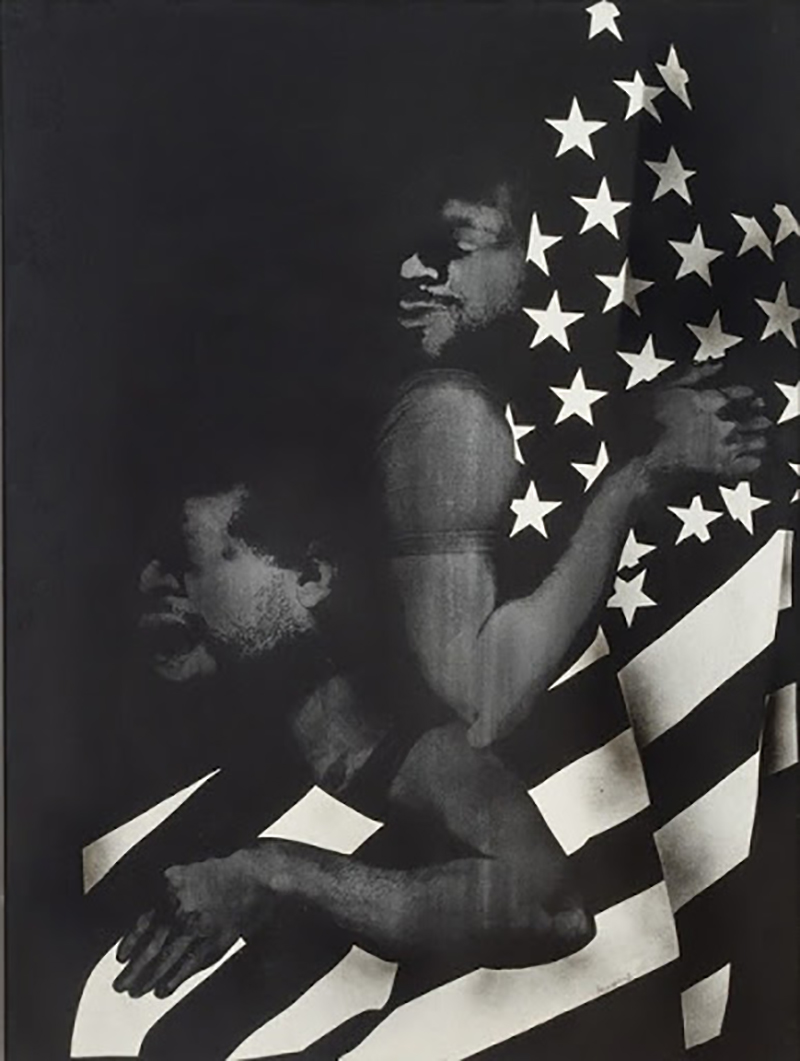
David Hammons, Black First, American Second, 1970. Photo from The Wattis Institute website
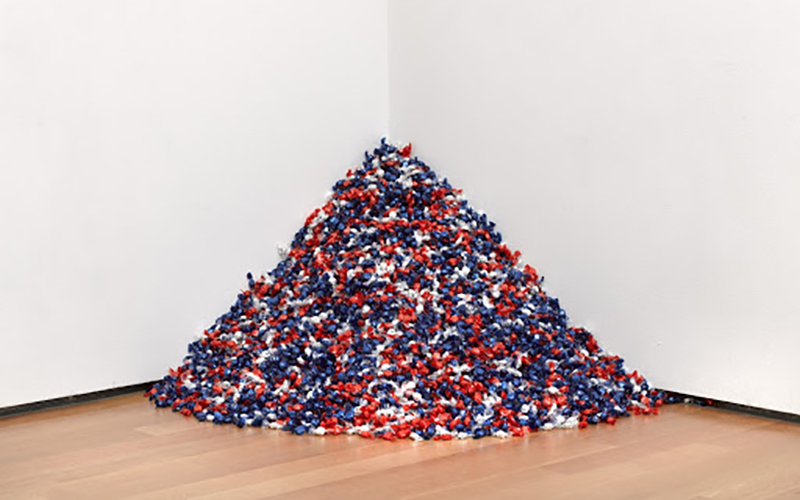
Felix Gonzalez-Torres, Untitled (USA Today), 1990. Photo from the Hammer Museum at UCLA website
A flag is a flag. Simply that. Flags are as effective in bringing people together as they are in dividing them. What is necessary is not the abolishment of flags. Differences are essential and will always exist. What is necessary is an appreciation of differences. A return to empathy in which judgments are not based on flags but on the quality of character. A movement away from territory and property and a movement towards shared and respected space. What matters are community networks of care where those which history has deemed as “other” are not sources of fear, rather, as sources of reciprocity.
Today is the last day to vote, take charge in the making of a more democratic society by making your voice heard. And continue the work after by participating in initiatives provided locally.
Below are a list of local resources to check out, followed by some of the books, music, and films that have broadened my idea and appreciation of community.
Champaign-Urbana Voting Information
Vote on Election Day
Resources from the Champaign Urbana Area
Resource List from the Illinois School of Art and Design
Central Illinois Mutual Aid MetaGuide
CU Showing Up for Racial Justice (CU-SURJ)
Education Justice Project
Reading
James Baldwin, Stranger in The Village
Nick Estes, Our History is The Future
Édouard Glissant, Poetics of Relation
Kimi Hanauer, Calling All Denizens
Angela Y. Davis, If They Come in The Morning…Voices of Resistance
Listening
Alice Coltrane, “Reflection on Creation and Space”
D’Angelo and The Vanguard, “Black Messiah”
Jacques Coursil, “Trails of Tears”
Marvin Gaye, “What’s Going On”
Oscar Jerome, “Breathe Deep”
Pharoah Sanders, “Karma”
Watching
Marlon Riggs, Black Is, Black Ain’t
Gillo Pontecorvo, The Battle of Algiers
On Inequality Angela Davis and Judith Butler in Conversation








